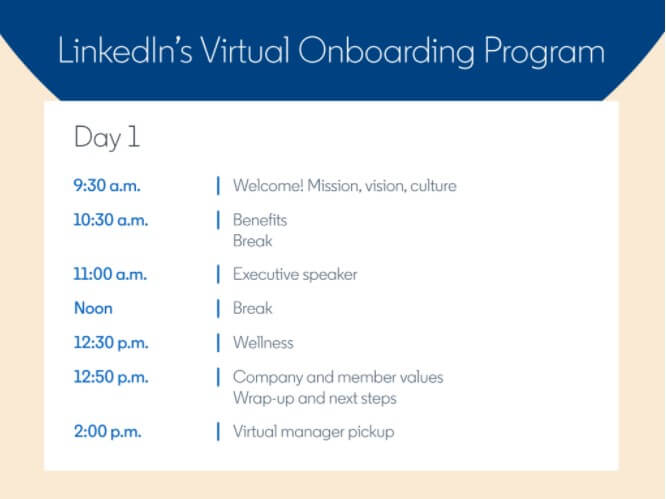Major disruptions like COVID-19 push us to rethink previous norms. More companies are now realizing that remote work can work. With a bigger shift to distributed teams, recruiting and onboarding are likely to change for good.
The COVID-19 pandemic has been hard on many people, both financially and mentally. For the majority of us, there is a general sense of anxiety about what comes next and how this will ultimately affect us and the ones we love.
Major disruptions bring major challenges, but they also bring opportunities as we are pushed to rethink previous norms. For a deeper dive on how you can prepare your startup’s recruitment program for a competitive new talent market , check out our other blog post here.
More companies have realized that remote work can work, and it’s nothing new. Many companies have operated successfully as partly, mostly, or entirely distributed teams for years. Today, we are seeing a bigger shift to remote work and a feeling that when possible, maybe a remote office should be the default.
With this shift, more companies are realizing that geography is less important or entirely irrelevant for recruitment. For some companies, this means that the best talent can be accessed regardless of where they live and without the need to relocate.
If location no longer matters, how will this change recruiting and onboarding after COVID-19 passes? Let’s take a look at three areas that will likely change in some way, forever.
1. Employee influencers are needed to attract candidates.
Recruitment has traditionally been an intensely local and personal process. Even as marketing teams have leveraged the internet to reach customers all around the world, recruiting teams still often rely heavily on job fairs, open houses, and local agency recruiters with their local talent networks. With the ability to cast a much wider net, recruiters will need to catch up and become more creative marketers.
Recruiters will learn how to engage employees to find more people that are like their best people. In other words, transform them into powerful brand advocates. This will take them beyond traditional employee referral programs, with employees becoming more like influencers. Recruiters will reach the right skillsets and industry experience by tapping into their employee’s personal and professional networks. Take it a step further and employee-generated content like technical blogs and employee stories can give talent an authentic view of the company culture, in the absence of face-to-face meetings at local job fairs and open houses. Here are some other sure-fire methods of cultivating your team of internal brand ambassadors:
- Communicate your company vision
- Layout sharing guidelines for content
- Provide basic training for social media if encouragement is needed
- Give employees permission to share things
- Do something worth sharing
- Use employee stories to promote culture
- Create an ambassador and referral program
For a more in-depth take on how to build up your army of internal influencers, check out our blog post, here.
2. Candidates need to be built for remote or hybrid models.
Buzz terms like “self-motivated”, “results-driven”, and “self-starter” regularly show up on job ads, but seldom actually get evaluated through the interview process. With a shift to more remote staff, recruiters and hiring managers will need to learn how to assess traits that give new hires a fighting chance of being successful in a remote work situation.

In general, all hiring can benefit from a more disciplined candidate screening, interviewing, and evaluation process. We are likely to see this improve as in-person interviews become more rare, and managers become less likely to rely on their gut instinct for hiring decisions. The best corporate recruiters already use formal candidate scorecards to fully define the job, the candidate requirements, and the evaluation strategy, before recruiting for a position starts. With these in place, managers can be confident that the required skills and experience are fully understood before decisions are made. This may mean having candidates complete a work-from-home assignment within a fixed timeframe, carving a larger part of the interview for situational questions or even asking them to submit computer specs or conduct an internet speed test.
3. Creative employee onboarding will set companies apart.
Companies who see home offices as a big cost-savings opportunity may miss out on getting the most from their remote employees. Working from home is nothing new, but it hasn’t been the norm. As a result, a lot more attention has been put on workplace optimization in offices, rather than specific configurations for effective home offices. Companies will need to set standards for home offices based on the type of work the employee will be doing. The home work environment will need to be reimagined to ensure an effective workspace, and this will require some help from the company.
To make all this work, employee onboarding will need to tighten up for a lot of companies. This may include consultations and planning prior to the employee’s start date, to ensure that they are properly set up to work remotely. According to Talent Canada, onboarding should also be a customized experience for every employee so that they feel valued and have everything they need to be confident in their work. Done right, this will be an opportunity to build a very positive experience for the employee.
Take LinkedIn’s virtual onboarding program, for example. When building, they asked themselves three critical questions:
1- Does it make new employees feel like they’ve made the right decision in joining LinkedIn?
2. Does it make them excited about the company’s mission and vision and how their new job aligns with that?
3. Does it help them build relationships that they’ll feel like they can expand on?

What resulted was a series of activities that made sure new hires feel welcomed and excited in the absence of physical office tours, team meals, swag bags, and meet-and-greets with new teammates.
Short of a virtual onboarding program with lots of staff and presentations, there are still many ways startups can engage and motivate their new employees with limited resources (or at least, fewer resources than LinkedIn!). Enter the office-in-a-box: where new hires are shipped all the necessary equipment for working at home. Maybe they include some kind of celebratory components like a shirt, a hat, and a welcome card signed by all the members of the team – maybe even a personalized digital welcome video and a virtual tour of the office. Some may even brand the equipment, desk, printer, or chair with the logo of the company. This reality is coming sooner than you think: a McKinsey survey of 278 executives last August found that on average, they planned to reduce office space by 30 percent.
They’re hired and onboarded, now what?
Now the work starts – for the manager. To get the most from self-motivated, results-driven, remote employees, managers need to be clear on the results they expect. It is just as important for remote employees to understand how their work contributes to achieving the company’s purpose and vision. This helps them to build a connection to the team and a sense of purpose, in the absence of regular in-person team interaction. Companies that don’t already employ a planning system and formal performance management, will be at a disadvantage and will need to adjust.
Collaboration and creativity may not come as naturally to a distributed team. Managers won’t be able to rely on serendipity or casual conversation in the office to spur creativity. Again, setting up the right environment for collaboration is key. Creative collaboration can be executed by establishing designated teams to work solely on this task. Creating a connection during a period of disconnection can insight creativity.
While we are adapting to a physically-distanced world, we’re being forced to overcome our fear of a remote workforce. As we gain more experience, we’re finding out that the fears we once had, are largely unfounded. People are productive, the work gets done, and with a little adjustment, you’ll be able to get even more out of your remote team.
So, what do you think? Are you and your organization prepared to hire and onboard more remote employees?







